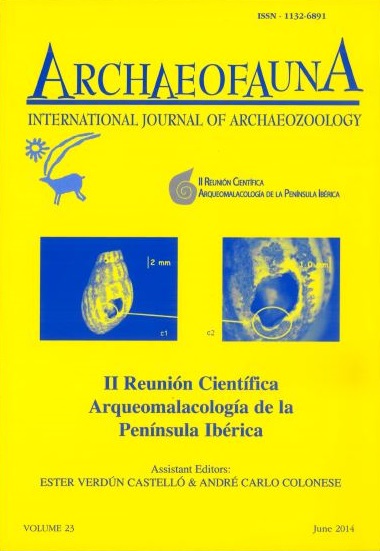Holocene coastal change and intertidal mollusc exploitation in the central mediterranean: variations in shell size and morphology at Grotta d’Oriente (Sicily)
Keywords:
Early Holocene, Central Mediterranean, Sicily, Mesolithic and Mesolithic-Neolithic Transition, Intertidal Exploitation, Shell Size VariabilityAbstract
Grotta d’Oriente, on the island of Favignana (NW Sicily, Italy), preserves evidence of the human exploitation of marine resources dating back to the early Holocene (Mesolithic and Mesolithic-Neolithic transition), at the time of dramatic coastal changes in the area during the isolation of Favignana from Sicily. Mesolithic and Meso-Neolithic deposits contained abundant intertidal mollusc remains, offering the opportunity to explore potential effects of human collection and coastal environmental changes on size and shape of some target species (e.g. Patella caerulea/ulyssiponensis and Osilinus turbinatus). Morphometric analysis reveals a significant reduction in the size of P. caerulea/ulyssiponensis shells between Mesolithic and Meso-Neolithic phases, corresponding with the interval of more intense shellfish exploitation. In the case of O. turbinatus, there is a significant change in shell shape, with slender Mesolithic shells being replaced by squatter forms in the Meso-Neolithic. These differences suggest the concomitance of environmental factors and exploitation pressure in the case of P. caerulea/ulyssiponensis, whereas the differences in shape of O. turbinatus seems more consistent with collection shifting from sheltered shores in the Mesolithic to exposed rocky shores in the Meso-Neolithic.

